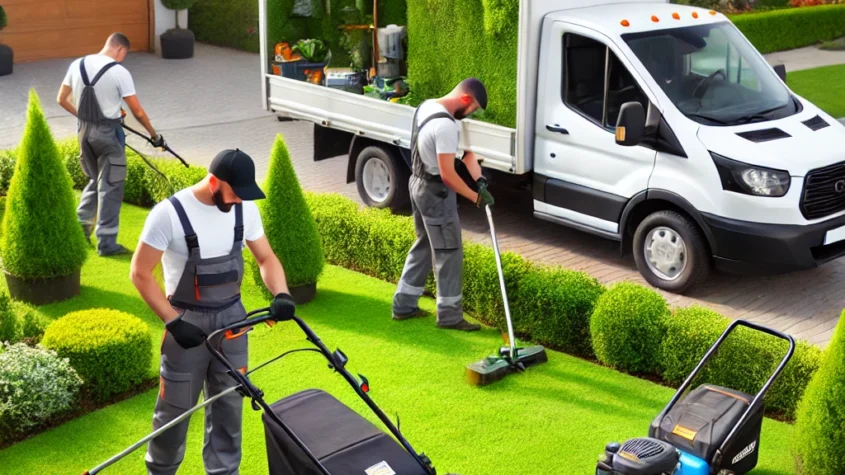
Lawn treatment services play a crucial role in maintaining healthy and vibrant outdoor spaces. These services offer tailored solutions, such as fertilization and pest control, to ensure lawns stay lush and free from weeds and diseases. Engaging a professional lawn treatment service can significantly enhance the aesthetic appeal and health of any lawn.
Regular treatments not only improve the grass’s appearance but also help in promoting growth and preventing lawn deterioration. Homeowners looking to achieve a pristine lawn often rely on the expertise of these services to identify specific needs based on local climate and soil conditions. By investing in lawn treatment, they can enjoy a beautiful yard that adds value to their property.
Understanding the benefits of lawn treatment services is essential for any homeowner. This post will explore various treatment options, their frequency, and tips on selecting the right service provider to achieve optimal results. Knowing what to expect can help in making informed decisions that lead to a flourishing lawn.
Fundamentals of Lawn Care
Effective lawn care encompasses several key components that ensure grass remains healthy and vibrant. Understanding these fundamentals can help maintain an eye-catching and resilient landscape.
Soil Analysis and Treatment
Soil is the foundation of lawn health. Conducting a soil test is essential to determine nutrient levels, pH, and organic matter content.
- Nutrient Levels: Essential nutrients include nitrogen (N), phosphorus (P), and potassium (K). These promote growth, root development, and drought resistance.
- pH Balance: Most grasses thrive in a pH range between 6.0 and 7.5. Soil amendments like lime or sulfur can adjust acidity levels as needed.
- Organic Matter: Adding organic compost improves soil structure, water retention, and microbial activity.
Regularly monitoring and treating the soil will enhance nutrient availability and overall lawn health.
Grass Selection and Maintenance
Choosing the right type of grass is crucial for a thriving lawn. Various grasses have different sunlight, water, and temperature requirements.
- Cool-season Grasses: Examples include Kentucky bluegrass and fescue, ideal for northern climates. They grow best in spring and fall.
- Warm-season Grasses: Bermuda and zoysia thrive in southern regions, enjoying peak growth during summer months.
Once grass type is selected, routine maintenance is necessary. This includes regular mowing, aeration, and fertilization, tailored to the chosen grass species and local climate.
Watering Practices and Irrigation Solutions
Proper watering practices directly influence lawn health. Establishing effective irrigation is vital for maintaining moisture levels.
- Watering Schedule: Grass typically requires about 1 to 1.5 inches of water per week. It’s best to water deeply and infrequently to encourage deep root growth.
- Irrigation Systems: Options include stationary sprinklers, drip systems, or automatic timers. Each system has unique advantages, depending on lawn size and layout.
Additionally, timing matters. Watering early in the morning minimizes evaporation and fungal disease risks.
Advanced Lawn Treatment Strategies
Advanced lawn treatment strategies focus on effective methods for maintaining a healthy and vibrant lawn. This includes managing pests, using seasonal fertilization techniques, and implementing aeration and dethatching methods.
Integrated Pest Management
Integrated Pest Management (IPM) combines various practices to control pests while minimizing harm to the environment. Key steps include:
- Monitoring: Regularly inspecting the lawn for pests and damage helps identify problems early.
- Identifying Pests: Proper identification is crucial; this often involves recognizing pest life cycles and behavior.
- Cultural Controls: Techniques like crop rotation, selecting resistant grass species, and maintaining healthy soil can reduce pest populations naturally.
- Chemical Controls: When necessary, selective insecticides and herbicides may be used, applied at appropriate times to minimize impact on beneficial species.
A balanced approach allows for effective pest control while promoting ecological health.
Seasonal Fertilization Techniques
Seasonal fertilization is pivotal for sustaining lawn health throughout the year. Timing and composition are critical factors.
- Spring Fertilization: During this period, a high-nitrogen fertilizer encourages lush growth. Look for formulations with slow-release components.
- Summer Maintenance: Use a balanced fertilizer with micronutrients to support growth without causing excessive leaf growth.
- Fall Application: A phosphorus-rich fertilizer strengthens root systems and prepares the lawn for winter.
Applying according to the season ensures the grass receives the necessary nutrients at optimal times.
Aeration and Dethatching Methods
Aeration and dethatching are essential for enhancing soil health and lawn vitality.
- Aeration: This process involves perforating the soil with holes to allow air, water, and nutrients to penetrate the root zone. It is particularly beneficial for compacted soils, improving root growth.
- Dethatching: Removing excessive thatch—accumulated organic matter—prevents it from suffocating the grass. It is done using specialized rakes or machines designed for thatch removal.
Both methods should ideally be executed during the growing season for maximum effectiveness.
Rent Mini Excavator Near Me: Your Guide to Affordable Options and Local Availability
Renting a mini excavator can be a game changer for small construction projects, landscapin…









